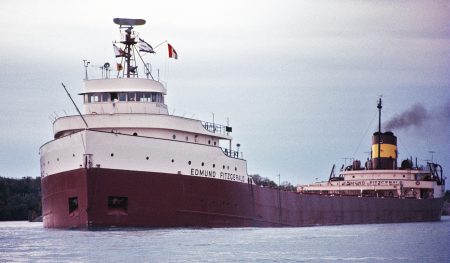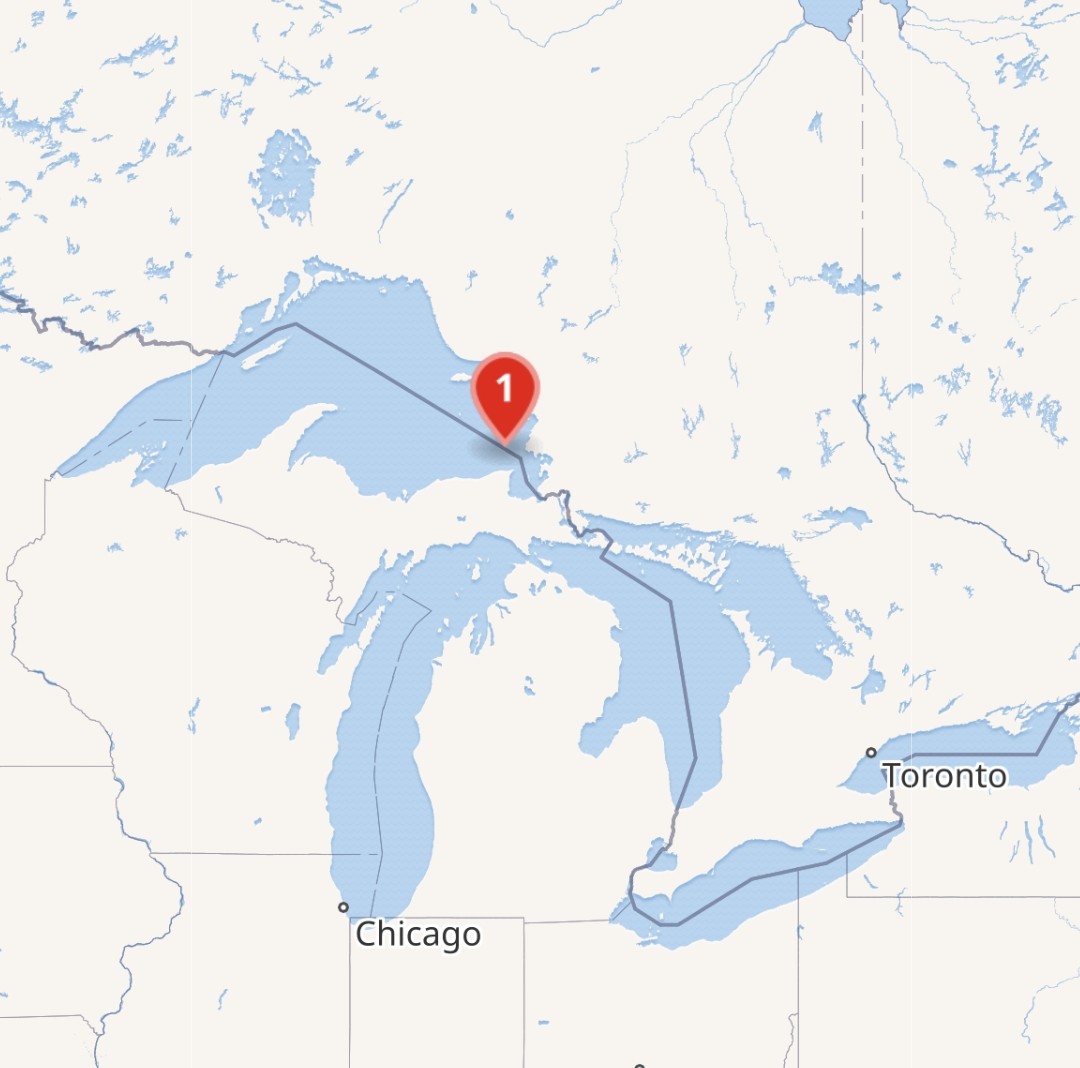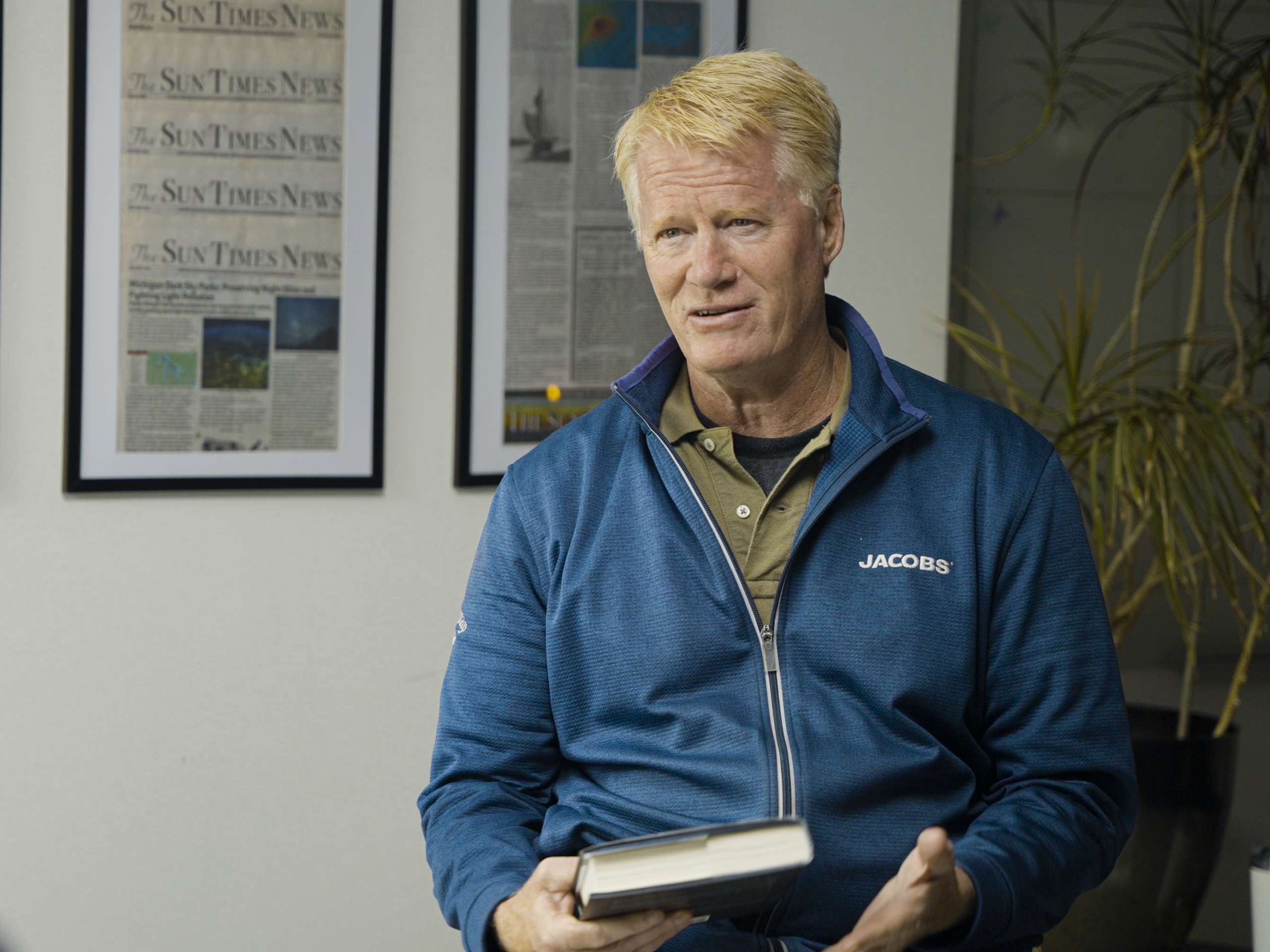The book revisits the sinking of the Edmund Fitzgerald in time for the 50th anniversary of the tragedy.
By Doug Marrin
Author John U. Bacon has written extensively about sports and history, but his newest project takes him onto the waters of the Great Lakes. His upcoming book, The Gales of November, is set for release on October 7, 2025, marking the 50th anniversary of the Edmund Fitzgerald’s sinking in Lake Superior. Bacon’s book focuses not just on the tragedy, but on the people whose lives were tied to the ship.
Bacon sat down with the Sun Times news to discuss his new book, beginning with what made him decide to revisit the Edmund Fitzgerald tragedy.
“I’m an Ann Arbor kid. Grew up on the Great Lakes, Traverse City and so on. If you grew up in this area, of course, you’ve been on Lake Michigan. You’ve been on Lake Huron, Lake Erie, probably Lake Superior at some point or other. We’re surrounded by [the Great Lakes],” Bacon said. “I realized how little I actually knew about the Great Lakes. That was stunning by itself. I know even less about Great Lakes shipping and how important it is and how we depend on it. And that brings us, of course, to the Edmund Fitzgerald.”
Bacon was 11 years old when the Fitzgerald went down in 1975. What has driven his work now, nearly 50 years later, is not simply the storm itself, but the people lost. “I was more curious about the 29 men that the bell rings for, and we know almost nothing about them. Who were they? What were their lives like? How are their families doing now, all these questions, that’s what really drew me to it. And of course, the 50th anniversary is this coming fall.”

Building Trust with Families
In researching the book, Bacon connected with relatives of the crew members. “It was very gentle at first, a very careful coaxing process to make sure you didn’t scare anybody off. They’ve been approached by a lot of people. They’ve talked to no authors, to my knowledge, so they’ve never talked before. But once we built the trust, once we got it going, the stories were fascinating. Just what their dads and uncles and cousins and boyfriends, in some cases, were like, that was really gratifying,” he said.
Bacon added that the conversations underscored how raw the grief still feels. “If you lost your dad when you’re 12 years old and now you’re 62 it still hurts. It doesn’t change very much. You get used to it, perhaps, but you don’t get over it.”
Learning the Lakes
Despite growing up in Michigan, Bacon admits he was surprised by what he learned. “The [Great Lakes] are bigger than all of New England plus the state of New York. I didn’t realize just how big they really are,” he said.
Commercial sailors told him the Great Lakes can actually be more treacherous than the ocean. “It turns out that with a 700-foot iron ore carrier like the Edmund Fitzgerald, you can have your bow stuck in a 30-foot wave and then nothing for eight seconds, and then your stern is stuck in a 30-foot wave, also with nothing between. So that’s where some of these ships, like the Morrell and Bradley, would actually crack with 26,000 tons of iron in them. There’s a real danger in the Great Lakes.”
Navigation, he learned, is also far more demanding than on the open ocean. “On the Great Lakes, if there are 300 ships at a time plying these waters, you have traffic jams in Detroit and Port Huron and the Soo Locks. It’s very tricky, and the captain has to know and do all of it. Whereas in the oceans, of course, the Harbor Master takes over your ship when you get near port or you’re leaving port, and a tugboat guides you in so you can go smoke a cigarette and read a book, and no one cares. So it is much, much harder to be a captain on the Great Lakes than it is to be a captain on the oceans.”

Sailing the Fitzgerald’s Route
To better understand the crew’s experience, Bacon retraced the Fitzgerald’s path. “I got on two ships. It’s very lucky. I got on the Wilford Sykes and the Arthur M Anderson. And those are the ships with the Fitzgerald out that night. So these three are running in a pack, basically, and communicating with each other throughout this trip. And I imagine getting two of those ships is all I could do, of course.”
He sailed from Marquette to Zug Island on the Sykes and from Duluth to Toledo on the Anderson. “Man, I got lucky at a lot of levels. One is that the weather was perfect, and the waves were nothing. So it was a pleasure cruise compared to what these guys were going through. But I also had the chance to thank God I did this, because I would never have felt the scale of this whole operation. How gigantic these engines are, 7000 horsepower. These ships are 700 feet just to walk to breakfast. It takes a few minutes just to get there…What these guys do. The scale of it all. And it was a wonderful trip for me. Amazing.”

A Personal Impact
For Bacon, the project became more than research. It reshaped how he sees sailors’ lives and sacrifices. “Sure, it changed me. I’d be about the same age as the captain, as some of the crew. Most of them are in their 50s and 60s, and I just turned 61, which I still can’t believe, but that’s how that one goes,” he said.
He recalled finishing his trip on the Anderson in Toledo, then being reunited with his son. “He runs full blast, and he’s about eight at the time, and gives me a hug I could never got before, and how Hold on for a minute. And then I thought, ‘This is what it was like to be one of these sailors. And this must be what it’s like to lose your dad. This is how close you were, how much you miss your dad already.’ And that can’t help but affect you.”
Bacon said the experience left him with a deepened appreciation: “You’ve got to think how much we owe these sailors on a regular basis. Without these guys, our economy doesn’t work. We don’t even know this. The cement in your basement, the steel in your car, the foot of your table, it all comes from Great Lakes ships. And I had no sense of this before this, but then again, the personal connection as well.”
What’s Next
While The Gales of November will keep him busy on a 30-stop, 15-state book tour this fall, Bacon has other projects in motion. “In the meantime, we’re turning the great Halifax explosion, a previous book, into a play. So that’d be pretty cool. I’m working on my third draft of the screenplay for Let Them Lead about coaching hockey here. So we have interests in Hollywood about that as well.”
The Gales of November is set to be released on October 7 and can be found on Amazon.



 8123 Main St Suite 200 Dexter, MI 48130
8123 Main St Suite 200 Dexter, MI 48130


